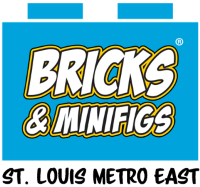LEGO bricks have been the building blocks of imagination for generations. From simple towers to mind-blowing castles, these little colorful pieces hold endless possibilities. But have you ever stopped to wonder how those perfect little blocks are made? Well, get ready for a behind-the-scenes tour of the LEGO factory, where raw plastic turns into the pieces of your next grand design—or that one brick that somehow always manages to disappear under the couch.
Step 1: The Material – ABS Plastic (No, Not the Gym Kind)
The LEGO journey starts with a magical substance known as acrylonitrile butadiene styrene (ABS). Now, ABS might sound like a complicated science experiment, but it’s actually just a super durable plastic that makes LEGO bricks tough enough to withstand the wear and tear of both enthusiastic 7-year-olds and the occasional (but always painful) accidental step on a rogue brick.
The plastic begins as tiny pellets, which are loaded into a big machine where they’re heated to a toasty 232°C (450°F). This is definitely not the kind of temperature you want to bake your cookies at, but it’s just the right heat to transform these pellets into a molten, gooey blob of plastic that’s ready to become your next masterpiece (or a very elaborate desk organizer).
Step 2: Injection Molding – Shaping the Bricks
Once the plastic reaches the ideal level of gooeyness, it’s injected into precisely shaped molds under extreme pressure. This process is known as injection molding, and it’s the reason LEGO bricks are the perfect size, every time. If you’ve ever spent hours trying to find that one elusive LEGO piece, you’ll appreciate just how much precision goes into making sure every brick fits snugly with its neighbors.
The molds are designed so that every little detail, from the studs on top to the hollow tubes on the underside, is perfectly formed. No one wants a LEGO brick that’s slightly too big or too small. Each brick needs to have the right dimensions to click together flawlessly. It’s like a tiny, plastic puzzle that engineers and machine operators get really good at solving.
Step 3: Cooling and Ejection – “Hey, Let’s Get These Bricks Outta Here”
After the molten plastic has taken the shape of your favorite LEGO piece, it needs to cool down. This is the moment where the bricks harden into their final form, ready to join the ranks of the millions of bricks already waiting to be part of your next LEGO project. The cooling process is a delicate art—too fast and the brick could warp, too slow and you’ll be waiting around forever (and that’s a long time when you’re thinking about your next LEGO creation).
Once they’re cooled enough, the molds open, and out pop the bricks like little plastic superheroes, ready to save your building dreams. They’re ejected from the mold, though not quite perfect yet. At this stage, some edges might need a little polish, and the studs might need a tiny bit of TLC. Every brick is treated like royalty at this point, making sure they’re smooth and sharp and ready for action.
Step 4: Quality Control – The “No Brick Left Behind” Philosophy
LEGO is serious about quality control. In fact, they take it so seriously that each brick is tested for precision and quality with the meticulous care of a watchmaker (I imagine them with a monocle).
Every LEGO piece is tested to ensure it fits perfectly with others—because nothing is more frustrating than trying to build a LEGO wall and realizing that one brick is just a tiny bit too big to fit. Each brick undergoes strength tests to make sure it’s sturdy enough for the next ambitious structure you’ll build—and that it’s not going to pop apart during the big finale.
Step 5: Printing and Decoration – Adding That Personal Touch
Some LEGO bricks, like those featuring beloved characters or fancy vehicles, require a little extra flair. Enter the printing process, where intricate designs are carefully added to the surface of the bricks. Whether it’s a minifigure’s face, a logo, or the side of a spaceship, LEGO uses precision printers to apply these designs with remarkable detail. It's like giving each brick a personality—after all, who wants a blank LEGO man when they could have one rocking a perfectly sculpted mustache?
Step 6: Packing and Shipping – Ready, Set, Go!
Now that the bricks are made and checked for quality, they’re ready to be packed into boxes. The sets are carefully organized so that everything you need to build your dream LEGO creation is included. Whether you’re constructing a castle or a futuristic city, the right pieces are sorted and packed like little puzzle pieces, waiting to become something amazing.
The boxes are then shipped from LEGO factories in Denmark, Mexico, and Hungary to destinations all around the globe. So, the next time you open a fresh LEGO set, just know that your pieces have traveled quite the journey to get to you. And they’re ready to make your next creation a reality—hopefully with all the pieces accounted for (unless that one elusive brick vanishes again).
The Final Product – The Magic of LEGO
From humble plastic pellets to the sturdy, snap-together bricks we know and love, making LEGO pieces is a blend of science, creativity, and precision. It’s a process that ensures every piece fits perfectly, clicks together smoothly, and stays strong through the most epic builds. So, next time you find yourself immersed in a world of bricks and imagination, remember that behind every snap is a whole lot of engineering wizardry and a dash of LEGO magic.

